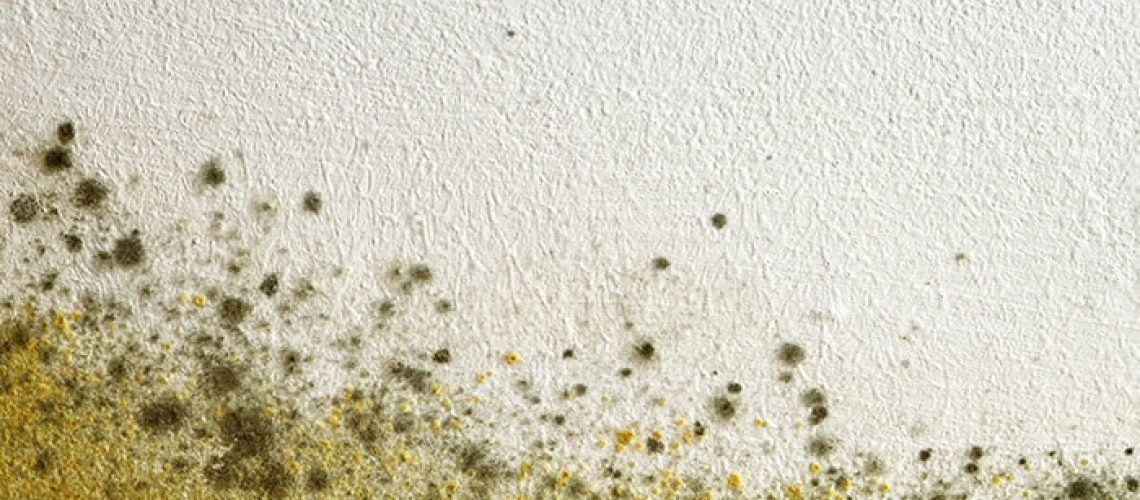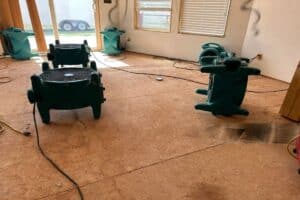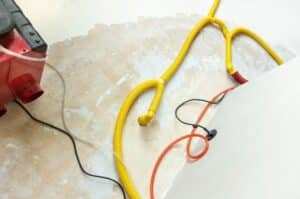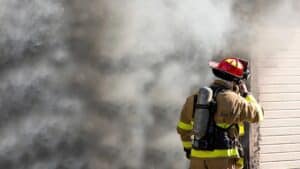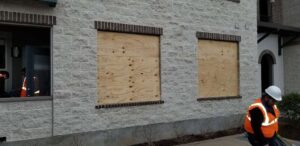Mold in your walls can be unsightly and lead to staining and even foul odors, but there’s more to it than that. Wet drywall is an ideal place for mold to grow. It’s porous and provides ample space for mold spores to multiply to their heart’s content, as long as there’s moisture present.
Mold growth inside the walls of your home can wreak some serious havoc on your health and the structural integrity of your home. Here’s a look at how dangerous it is to have mold growing in your walls unchecked.
How Do You Get Mold In Your Walls?
Mold can grow on various surfaces, but it thrives on porous materials like drywall. But mold spores aren’t just going to take up residence in the walls of a clean and dry home. It requires a few things to start growing: water, food, and oxygen.
Unfortunately, drywall makes an all-organic buffet for mold spores, and oxygen is naturally abundant in your home. So, all it takes is some moisture to penetrate your walls, and you’re looking at a dangerous trifecta for mold growth.
The most common cause of mold in walls is a flood or a water leak that isn’t addressed immediately. But houses in highly humid areas can sometimes get mold in their walls without a single triggering event. The key to preventing mold from growing is to keep everything as dry as possible and dry it out quickly if a flood or a leak does occur.
It Spreads Easily On Drywall
Most homes and businesses have extended lengths of drywall. So once mold makes a home in even a small portion of your wall, it has endless real estate to expand on. The porous nature of drywall means it soaks up moisture easily and provides plenty of space for mold to thrive.
Mold growing in your walls will require favorable conditions, but as long as there’s plenty of food and moisture, the mold will have no problem multiplying at an alarming rate.
Mold spores in your walls can easily become airborne and spread to other areas of your home. This might include your HVAC system, furniture, attic, and crawlspaces. If mold is left untreated, the problem will only get worse. A quick response to a mold problem is necessary to preserve your health and protect your physical structure.
It Causes Allergic Reactions
Inhaling mold spores can cause severe allergic reactions. The same can happen when mold comes in contact with your skin and eyes. If exposed to mold, you might find yourself sneezing, coughing, and experiencing a runny nose and watery eyes. This is your body’s natural response to a foreign substance. Your immune system immediately releases antibodies to try to remove the mold spores from your system.
Some types of mold are more likely to cause allergic reactions than others. The most common allergy-causing molds include Alternaria, Aspergillus, Cladosporium, and Penicillium. Those with a history of allergies might react more strongly to mold spores, as will those who live in homes with high humidity and poor ventilation.
It Damages Your Walls
Mold in your walls is extremely unsightly. It causes staining that can be extremely difficult, and sometimes even impossible, to remove. But that’s only the beginning. Any mold left untreated will eventually rot the drywall and require the complete replacement of the walls to get rid of the damage.
The mold that spreads to the rest of your home might also mean that you need to replace your carpet and furniture for full remediation. This can lead to costly repairs. Catching and addressing the mold problem early on will save you money and help preserve your home.
It May Cause Serious Health Problems
Asthma attacks, lung conditions, and respiratory diseases are all common health problems caused by mold exposure. These problems can be especially problematic for people who already have asthma.
Another common illness caused by mold exposure is hypersensitivity pneumonitis. This occurs when your body experiences an allergic reaction to the mold, causing severe lung inflammation.
Getting Rid of Mold in Your Walls
Although prevention is the goal, sometimes mold sneaks up on you without you even realizing there is a moisture problem.
So how do you get rid of mold once it’s found its way inside your walls?
The best and safest method is to call your local mold remediation specialist. They will work quickly and properly to restore your home and keep the mold from spreading beyond the already infected areas.
Here’s a quick overview of the steps a mold remediation team will take to restore your home to its prior state:
- Inspect your property, and assess the damage.
- Find the source of the moisture, and stop it.
- Contain the infected area so the mold can’t spread.
- Determine whether to replace or disinfect the walls (this will be determined by how severe the damage is).
- Remove mold-infested items like drywall, carpet, and furniture.
- Dehumidify and disinfect the entire area.
- Make needed repairs, and remedy any leaks that are found behind the walls.
- Replace cleaned materials.
Restoremasters Is Your Mold Remediation Specialist
Restoremasters is here to help if you find mold in your walls. Our mold remediation team is equipped with the knowledge and tools to restore your home or business to its mold-free state. Our goal at Restoremasters is to promptly repair damage to your property caused by wind, fire, mold, water, sewage, graffiti, or smoke.
We have more than 100 years of combined experience in the industry and the right tools for the job, so we can get you back to everyday life regardless of what damage your home has suffered.
We are located in Sandy, Utah, and provide services to the greater Salt Lake and Utah County areas, from Salt Lake City to Spanish Fork and everywhere in between. Contact us today via the form on our website or give us a call at 801.938.8654 to get started!

